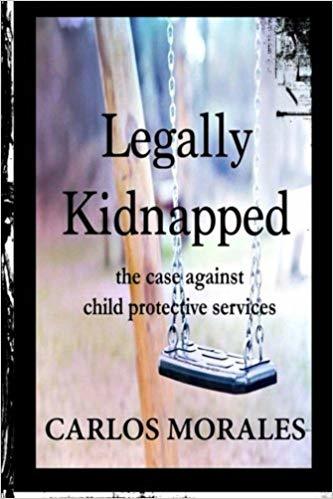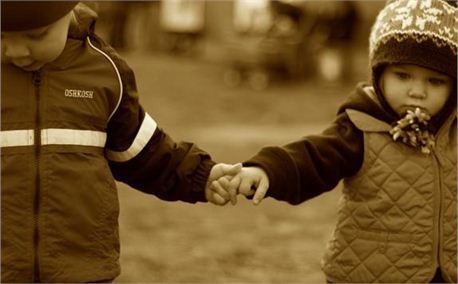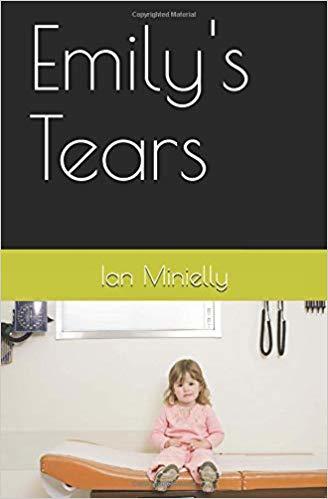Ian Minielly's Blog
May 30, 2019
Saving Another Emily From Tears
Right now there is a family in Georgia we have gotten to know experiencing the same trauma of a contested adoption described in Emily’s Tears. In their case another absent family member in another state is making a claim on a child they do not know. The Steven’s family has been raising this “Emily” from birth to 17 months and they want to adopt her.
The Steven’s family is sponsoring a Puzzle Fund Raiser to help defray the costs. Speaking from experience, Stephanie and I spent just under $10,000 doing the same thing and were helped greatly through the contribution of family. It is not free or easy to contest the State. The State uses other peoples money and bureaucratic hurdles to drive up costs on people seeking justice, so the greater the cost, the better it is for the State.
The Steven’s Family Fundraiser:
• The Steven’s Family has a beautiful 520 piece puzzle
• Each piece can be purchased for a $25 donation or more
• You can buy 1, 2, 3, or as many pieces as you would like
• Your name will be written on the pieces you purchase, scaled to size
We have decided to step out on Faith and fight for our sweet girl!
We’ve had her since birth, so help us Fight for a piece of Our Hearts!
After the puzzle is completed, the Steven’s will frame the puzzle between two pieces of glass and hang it in her room. This will be a wonderful keepsake forever reminding them and her of God’s faithfulness and of all the people who loved her!
The Steven’s are buying the 1st FIVE! (Represent sweet girl, Chris, myself, and boys!
How to Donate:
• Click on our link to make your donation and pay securely through PayPal
https://www.paypal.me/stevensadopt
• Write a check or donate cash and hand deliver to Shea Stevens
• Mail a check to us (email us at stevensadopt@gmail.com for our mailing address)
 This is the actual puzzle being used for the fund raiser that will have the names written on it of supporters and hung in the child’s room.
This is the actual puzzle being used for the fund raiser that will have the names written on it of supporters and hung in the child’s room.
May 23, 2019
Other Than Kin?
The choice of placement with a family member or blood relative is the simple solution that Foster Care agency’s bank on within their decision matrix. It is easy. “Ohh, you are a blood relative, you are our choice,” being the type of decision making made by the State when it comes to placement for adoption.
This is a reduction to the least common denominator for DHHS and adoption agencies. It has nothing to do with what is best for the child, it is a square peg and government agencies and their contract businesses involved in placement use it as a jack hammer to profit from placements while pretending they have no choice in the matter by saying, “blood relative” preference.
The state of Georgia just signed legislation into law that provides a small nick against this poor decision matrix. Under this legislation is a blood relative does not make an effort to adopt a child within six months, the State will consider the placement with the foster parents.
Jennifer Shinpoch, a foster parent who lost a child after fifteen months in Georgia said, “you’ve asked them to heal once” after removing them from an abusive or neglectful situation. “Are you going to ask them a second time to break another maternal and paternal bond?”
Generation Justice, engaged in political crusading to change how States make decisions regarding placement of foster children, is trying to get legislation passed in states that would allow children to be adopted by their first birthday.

Having first-hand experience with the court system regarding foster children and faulty adoption decisions, Stephanie and I went to court monthly. The lawyers, judge, and DHHS folks kept getting paid and the biological parents stayed in prison. Each court session the can was kicked and everyone got paid and paid and paid. It took twelve months before the biological parents severed their parental rights. Keep in mind these parents had 9 kids between them already and huge rap sheets!
Upon termination, DHHS management waited until they could get the agency and workers they wanted that would select family over foster parents for adoption. Two months later the choice was made and 89 days (if made within 90 days a bonus is paid) later the biological family was picked. No less than 10 people got paid for 17 months to drag the case out and then they removed the child and sent her to an aunt on the other side of the country, justified through lies and kinship.
The foster care system is not a solution to problem families. These families need intervention only available through the saving grace and mercy of Jesus. The State, an institution only capable of death and taxation, is not capable of getting involved with families and the specific dynamics that lead to abusive relationships. The Church must be involved because it has the only workable solution.
Christians must look at families in their communities as a mission field. It will not be easy. There will be failures and successes, but the Church must remove the State from aiding families in crisis.
May 7, 2019
Expected Results
Imagine if the Federal Government offered an agency $4-6,000 for every child removed from a family and placed with another one. Do you think this would create an atmosphere of child kidnapping or would CPS ignore the payments and focus on the children and family over the cash payments?
Carlos Morales, a CPS whistle blower, wrote Legally Kidnapped: the case against child protective services exposing the child trafficking industry. Imagine the high crime against families being done, but now imagine you are paying for it.

May 4, 2019
Do Not Lose Faith…ever
The first parents of Emily in Emily’s Tears held out great hope she would contact them. They went above and beyond to follow her from afar and be involved, without rupturing or risking her adopted home life.
Dear Annie published a letter recently from a birth mother that gave her son up for adoption. The mother was only 14 when she got pregnant and while she did not want to give up her son, she realized she could not adequately support her son, so she gave him up.
For the next 45 years she never gave up on him and prayed for him often. Namely she prayed that he would know he was never not loved or unwanted. She wanted her son to know she loved him, but she also never actively looked for him, because she did not want to cause problems for his adoptive family. She stayed silent and alone.
After 45 years, her phone rang and it was her son. Her prayers were answered. She was finally able to talk to her son. This is the dream of adopted kids and their parents. They long for this contact. Ed and Linda longed for it. Do not give up hope or trusting in God. These prayers get answered and family’s will unite again.
Illinois Pledges Changes…Again
We have all heard the stories and they hurt us every single time as avoidable. A young child is found dead and it should have never happened. All the warning signs were there, but they were ignored and a child pays for the actions of a system, bureaucracy, and people who take advantage of the most vulnerable members of society.
This story coming out of Chicago has been national news. The story involves a young man named Andrew “AJ” Freund who went missing and then was found in a shallow grave. AJ is the third child to die while in the Department of Children and Family Services since February. Read that again. Three children since February have died while in State care.
There was a doctors note about abuse and AJ being hit with a belt. AJ was seen with bruises and let us not forget, he was borne with opiates in his system. Story’s like AJ’s are the logical result of the State getting involved in parenting and child care. AJ should be alive today.
Guess what will happen? The DCFS in Chicago will receive more money, hire more bureaucrats, and create more systems and paperwork and hoops to jump through, but none of it will solve the problem. DCFS is not part of the solution, it is part of the problem.
A. Drug usage by parents is part of the problem, their proposed solutions will not curb this.
B. The bureaucracy is part of the problem, creating even more of it will not save future kids, but will almost assuredly result in them being placed in greater risk.
C. Having a system that needs bad families and risky children to thrive and grow ensures more bad families and risky children because the incentive is to get more, not correct the morally corrupt elements hurting children.
D. Non-State elements that could step in and at least work to solve this problem (like churches and para-ecclesial bodies) will remain on the outside looking in because they lack the ability to remove the existing lawfare (
I want us all to pray that children like AJ never run afoul of the DCFS in Illinois again. Christians have the capacity and ability to step inside this issue and make a difference, but people will have to agree that Christians have a moral imperative to aid children and hurting families through the love of Jesus and then be willing to stand in front of the State to remove this power from it.
Barring the above change and/or a worldwide change in behavior and belief, the AJ’s of the world will continue suffering. We can do better, but the State cannot.
April 15, 2019
Moving Forward
 Let no one come between God and children.
Let no one come between God and children.The State run adoption and foster care system is a wreck. By design, the State is incapable of managing something as nuanced as children and parenting. The State cannot even prosecute war properly. The State is a hammer and sees all options before it as nails in need of smashing.
The State solution is to build a huge bureaucracy that grows every year.
The State is incentivized to remove children under any and all pretenses out of fear, because if a child is not removed and is injured or dies, the State is ridiculed in the press. In response the State trains its employees to steal children, especially if the family is poor. The safest option for the State is to remove children in any and all circumstances while creating a circus for the parents to navigate to get their kids back. Meanwhile the kids are traumatized, the family suffers, and the bureaucracy grows.
There is no easy answer. Some children are being harmed by unfit parents and historically there were two options:
The family. A family would intervene to look out for its own. An uncle/aunt/brother/sister/grandparent would step forward and assist in the raising of children when their parents are/were incapable of raising their children either permanently or for a temporary period of time, such as entry into prison. The State uses Foster Care in an attempt to mimic this natural system, but adds many requirements and an ocean of bureaucrats and buildings and automobiles. The State increases the layers of difficulty for families to navigate, costing the public great sums of money and the family time and money to meet State requirements.Faith-based care. Many faith-based orphanages were funded and run by religious organizations. The most well-known being the Catholic run orphanages, but they are not alone. Southern Baptists are also well-known for doing the same. There is a chance for abuse by those employed in this system, but it is not publicly funded by the State, compounding the issue through theft. Individual churches and para-church organizations will do a better job than the State. There are some great success stories of kids raised under these conditions who have been highly successfulThe State makes attempts to mimic this system, supported by theft from the public and manned by an army of bureaucrats. The State has wrecked this system so poorly, the Federal Government pays $10,000 bonuses to adoption agencies for placements that happen within 90 days. One can only imagine the incentivized abuse this entails when destroying families and trafficking children results in bonuses being paid.
I want to state that either of the two above options or the State run bureaucracy currently in favor are simply chasing after the horses after the barn burned down. The root problem is the sinful behavior permeating society that rests on those least capable of defending themselves, because they have a built in love for their family. Government is toxic and creating a culture that is making criminals out of people who are not criminals with each new law and prohibition resulting in more kids being taken.
Under the State, more children are removed and their families hurt as the permanent bureaucrats have every incentive to make more behavior criminal and then to remove children and place them in the system to eventually sell on the open market for bonuses.
Under the two examples that exclude the State, fewer children are removed because it becomes the option of last resort. In either case, there is no good answer without first addressing the behavior of humans. As a society we must recognize the problem is sinful behavior. Placing new laws on the books and funding a bureaucracy through theft to enforce the law does not decrease criminality, it increases “criminality” while growing a State that sucks the blood and morals out of society.
Solutions:
Decrease/end the State. Begin shutting down whole agencies at the state and federal levels and the laws/infrastructure used to support them.End income taxesEnd property taxesEnd the Federal ReserveRecognize that if a program is needed, people will willingly pay for it without government. Allow humans to choose and organize voluntarily without theft and coercion.Allow people and families to solve their own problems.If it is wrong for me to do something, it does not become less wrong because a politician or their henchman do it.People will naturally do this at the lowest level, they do not need to be coerced.I am reserving the right to return and add to this essay from this point forward and to make adjustments to the body as necessary. May God bless my efforts and thinking.
April 12, 2019
Low Income Parenting
The State considers people with low(er) incomes substandard parents.
“In Michigan, for instance, more than 90% of all child welfare cases cite “neglect” as one of the factors leading to child removal.
The parental rights group has identified one factor that is likely to result in the loss of children from a home, having a low income. Who would think being poor would be equated with bad parenting. My thought on this is the poor do not have the resources to fight the State in court, so taking the children of the poor and giving them to wealthy folks makes good business sense for DHS/CPS.
Despite the impact it has on the children and their natural family.
April 9, 2019
Adoption—what’s in it for the social worker?
Reading about this callous social worker sure hurts in the feels. I think this happens more than anyone can ever know. In other words, it is child trafficking.
 Adoption Detective: Memoir of an Adopted Child
Adoption Detective: Memoir of an Adopted Child
 The vintage file cabinet behind the social worker’s desk was filled with secrets, concealed documents, lies and cover-ups that contained the names, addresses and social security numbers of hundreds of adoptees and their birth parents, grandparents, siblings and biological family members. I wondered how many adoptees from closed adoptions around the world would like to see their records? It amazed me that a stranger knew everything about me. She had complete control over my files—documents to which I was denied legal access.
The vintage file cabinet behind the social worker’s desk was filled with secrets, concealed documents, lies and cover-ups that contained the names, addresses and social security numbers of hundreds of adoptees and their birth parents, grandparents, siblings and biological family members. I wondered how many adoptees from closed adoptions around the world would like to see their records? It amazed me that a stranger knew everything about me. She had complete control over my files—documents to which I was denied legal access.
True story…when I was thirty years old I discovered the name of the social worker who handled my adoption. I telephoned her office and requested a meeting. The building was drab without windows, photographs, flowers or ornamentation of any kind. She was a spinster at the end of her career. Her hair exactly matched the color of her faded gray suit. She ordered me to sit on a…
View original post 660 more words
April 8, 2019
My First Novel
 Ian Minielly’s first novel about a young lady discovering the past she was never told existed.
Ian Minielly’s first novel about a young lady discovering the past she was never told existed.Emily’s Tears is my first novel. I began writing it in December 2018, after contemplating the story for a number of months. After tearing up through the first chapter, I decided to take a small break in hopes I could type with clear eyes after the passage of some time.
When I took up writing again in February of 2019, I changed the story and decided the story needed to be short enough for reading in one sitting. I set a personal goal to bring the reader into the emotion of a family experiencing this kind of trauma and figured if people read a typical book over many days and sittings, the full range of emotion would be dulled by the extended duration involved in the reading.
Therefore, with Emily’s Tears, I wanted the book to be short enough for reading in one or two sittings so the full emotional load would be felt by the reader. I would love to hear if Emily’s Tears accomplished this goal.



